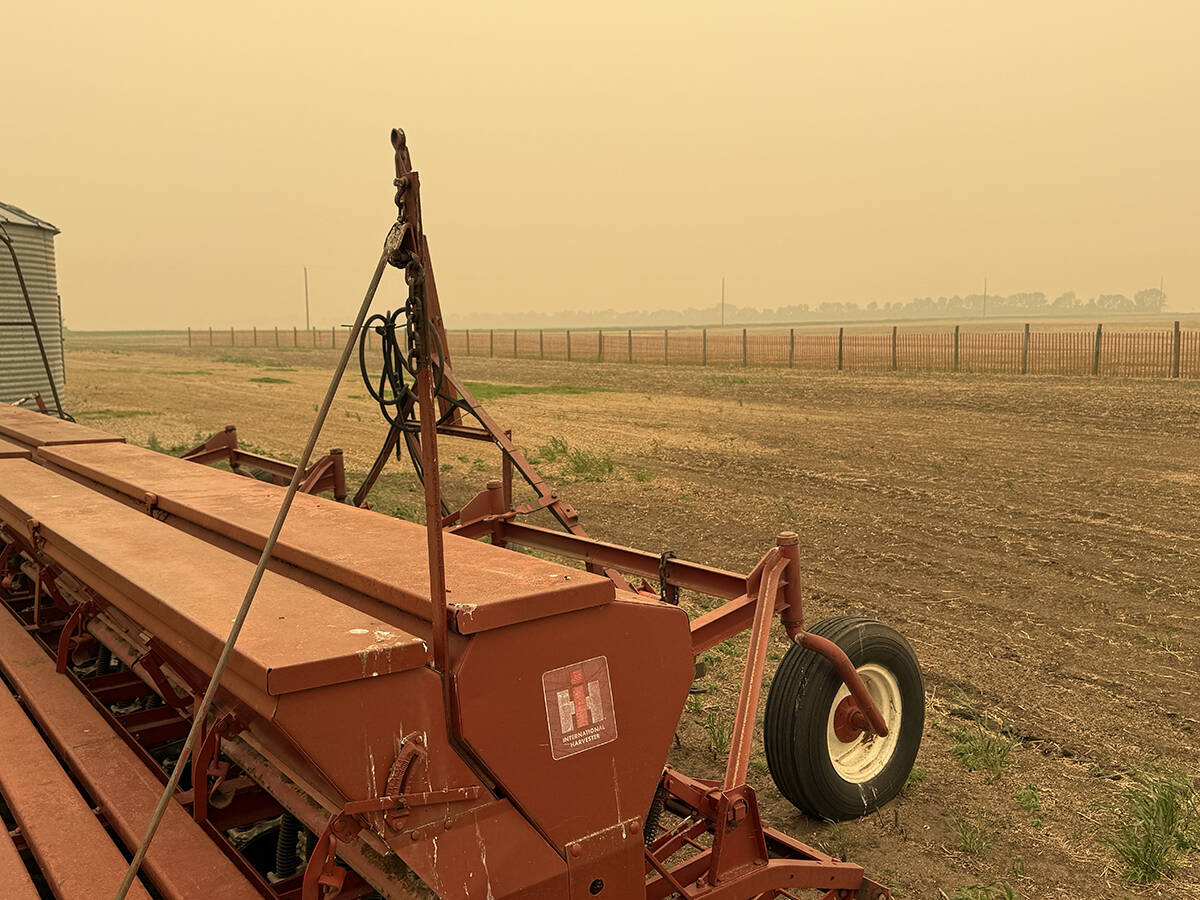The world should be more worried about running out of phosphorus than oil, says Vivek Voora, a project manager for the International Institute of Sustainable Development in Winnipeg.
“The peak phosphorus issue does get compared to peak oil often,” said Voora, co-author of a IISD study released last week titled Peak Phosphorous: Opportunity in the Making.
“We’re extracting oil as a source of energy and there’s a lot of other sources of energy that we can tap into. Whereas phosphorus, there isn’t a replacement for phosphorus. It’s a basic element we need…. It cannot be replaced.”
Read Also

Wildfires have unexpected upside this year
One farmer feels smoke from nearby wildfires shrouded the July skies and protected his crop from the sun’s burning rays, resulting in more seeds per pod and more pods per plant.
Voora and co-authors Diane Malley and Andrea Ulrich said the world’s food production is at risk if global phosphorus resources are not managed carefully.
“Closing the loop on our food systems and moving toward phosphorus independence is crucial to maintain long-term global food and water security,” added Hank Venema, director of IISD’s sustainable natural resources management department.
The study said peak phosphorus is an unknown. Some experts expect global production to peak in 20 years, but others believe there are sufficient phosphorous deposits to last hundreds of years.
If the pessimists are correct, prices will soon escalate and provide an economic impetus for recycling and recovering phosphorus.
However, Voora said it’s too simplistic to manage phosphorus solely on price and economics. As an example, he said excessive phosphorus loading has turned Lake Winnipeg into the most atrophic large lake in the world, which means the world’s 10th largest freshwater lake is now polluted with algae blooms that remove oxygen from the water.
Voora’s study doesn’t blame a particular industry for the problems in Lake Winnipeg. He said he is more interested in solutions.
“It’s not about figuring out where the sources are coming from so we can point fingers,” he said. “We’ve got to look at the whole issue in a very holistic manner.”
The IISD study compares Lake Winnipeg’s health to Lake Erie, which suffered from eutrophication in the 1960s. Lake Erie recovered when phosphorus loading was reduced, but Voora said Lake Winnipeg’s problems are more challenging.
“Dealing with those non-point sources (of phosphorus) is just a different animal. It’s a lot more complex,” he said.
Factory and sewage treatment emissions were the chief source of phosphorus entering Lake Erie, he added.
Nonetheless, end-of-pipe treatment is potentially part of the solution for Lake Winnipeg, Voora said. His report noted that Ostara of Vancouver has developed technology to remove struvite from waste water.
Struvite, or ammonium magnesium phosphate, can be converted into fertilizer, which Voora said would provide income for a sewage treatment facility and cover the cost of the technology.
The City of Winnipeg is spending more than $1 billion to upgrade its waste water treatment plants, but Voora isn’t sure if struvite recovery is part of those plans.
However, he said phosphorus recovery should be part of the plan if governments are spending that kind of money.
“If we’re looking at making investments like that, we shouldn’t be dead-ending the phosphorus. We should be trying to find ways to recover it.”
The report said struvite production would meet 30 percent of Canada’s fertilizer consumption if all of the country’s waste water plants installed such technology.















